|
| |
| |
| |
There is No Such Thing as Bad Publicity
Jan Van Beers, or: The Chronique Scandaleuse of a Belgian Painter in Paris and London
[Jan Dirk Baetens]
In his 1912 autobiography entitled Recollections of a Court Painter, the Irish painter Henry Jones Thaddeus describes a sumptuous banquet organised in London in 1887 by the Belgian painter Jan Van Beers (1852-1927). According to Thaddeus, Van Beers was at the time very much the talk of the art world, and the feast he gave was the most extravagant London had ever witnessed. It was attended by politicians, diplomats, bankers and artists, who were treated to one surprise after another. Thaddeus describes for instance how Van Beers had his guests seated at a miraculous opalescent glass table. On the table an enormous pie was served, out of which suddenly flew a flight of singing birds. The company had hardly recovered from the surprise when everybody was spellbound at the sound of a divine voice, apparently coming from nowhere, singing a beautiful aria from Faust. It was the voice of the celebrated opera star Nellie Melba: Van Beers had persuaded her to conceal herself in the loft above the room adjacent to the banquet hall and to sing, hidden from sight, through a hole in the wall. It made the party a tremendous success and the Belgian painter even more famous than he already was.
The banquet in London, however, was only one in a long series of splendid festivities and intimate get-togethers which Van Beers organised in those years for Europe's merrymaking beau monde. On one of these occasions, Thaddeus reports, he welcomed his guests in a dimly lit room with a number of incredibly realistic paintings of life-sized heads of young women on the walls. As the evening's pièce de résistance a colossal silver casket was served on a bed of crimson roses. When Van Beers lifted the lid, ‘Venus, the cherished of all mankind, arose from cotton-wool foam and sitting on the side of the casket deigned to give one of her pink-tipped feet to be kissed, while the other rested on the sweetscented roses.’ Suddenly a laugh burst from the pictures on the walls, the faces disappeared from the frames, and a cluster of gorgeous nymphs came dancing into the room (they had been sticking their heads through empty frames attached to the wall). By then, the woman impersonating Venus had picked up ‘her sacred symbols’, a peach and a glass of champagne (not quite her usual attributes, but probably clear indications of where the festive evening would lead to), and the party could really begin.
| |
| |
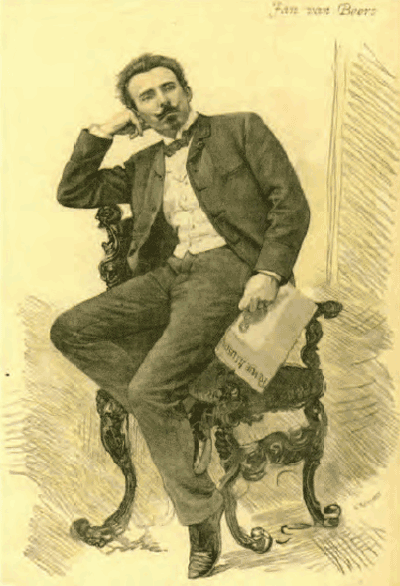
Léon Rousseau, Jan Van Beers. In Revue illustree, 3. vol. 5. no 58 (1 May 1888).
| |
The painter and his fairy palace
In the course of the 1890s Van Beers became a key figure in party-going European high society. On 13 November 1899 the New York Times devoted an entire article to the stunning hôtel which the artist had designed especially for his parties in Paris, close to the Bois de Boulogne. Van Beers' ‘fairy palace,’ the newspaper wrote, was one of the most remarkable houses in the world. It featured marvellous wall paintings and decorations copied from palaces all over Europe, and a life-sized coloured statue of Eve to welcome visitors. The house had a Japanese room and a bedroom modelled after an Indian temple, with Hindu-style sculptures of gods, courtship scenes and dancing girls. At the centre of the house was the dining room, where guests were received under a ceiling of clouds and angels done in high relief and surrounded by windows supported by nude female figures. There Van Beers had installed a table which could disappear down to the kitchen below and subsequently reappear laden with refreshments. It had been devised in order to guarantee the privacy of Van Beers' distinguished, libertine guests, but of course the result was exactly the opposite: the artist's parties were the most talked-of affairs in Paris.
Belle Livingstone, a notorious American cocotte, describes one of these parties in her 1959 autobiography entitled Belle Out of Order. No fewer than four kings participated in it, including King Edward VII of England, all accompanied by their actress lady friends. On Van Beers' special table, Livingstone writes, three huge mounds of flowers had been placed, from which all of a sudden three gorgeous young artists' models appeared - ‘nude of course,’ she laconi- | |
| |
cally observes - who offered each of the ladies present a flower. The evening continued with a lavish dinner and a ‘risqué, highly amusing revue which had been specially written’ for the occasion and in which, undoubtedly after a lot of champagne, even the guests took part.
| |
From history painter to household name
Van Beers' celebrity from the late 1880s onwards contrasts sharply with the circumstances under which he had arrived less than a decade earlier in Paris, where he had set up his studio after his studies at the Antwerp Academy. Technically perhaps the most brilliant Belgian artist of his generation, he had tried to make a career for himself as a history painter. Critical acclaim had failed to materialise, however, probably partly due to the eccentric nature of most of his work. This embittered the artist and compelled him to reinvent himself as a painter of portraits and elegant genre scenes - mostly demi-mondaines, fashionably dressed or en deshabillé. The strategy worked, catapulted the artist to the top of his profession and made him immensely popular. There are clear indications, however, that part at least of this success was due not so much to this reorientation of his career as to a string of scandals which the artist seems to have deliberately provoked in the 1880s, in order to make as much noise as possible and thus make a name for himself.
In 1882, for instance, Van Beers exhibited a painting depicting a young woman in a dress on which the paint had not yet completely dried. A vandal took this as an invitation to dip his finger in the wet paint and print it on the demoiselle's face. This gained Van Beers plenty of press coverage, but also elicited from a journalist the suggestion that he had staged the incident himself. In the very same year, the painter caused a scandal by loudly protesting at the disadvantageous hanging of his work at the Paris Salon. He reacted by applying a layer of varnish on his work, making it indecipherable. In 1883 he employed the exact same tactics, again varnishing his paintings in protest against the Salon's hanging committee. This time, however, an art journal observed that he had only varnished a glass plate in front of his paintings, which made it clear that he had not acted out of spontaneous artistic rage but knew perfectly well what he was doing: working the media.
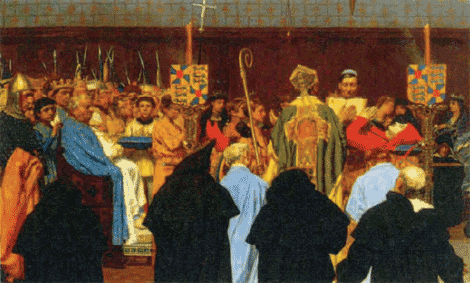
Jan Van Beers. The Funeral of Charles the Good, Count of Flanders, Celebrated in the Saint Christopher Church in Brages on 22 April 1172 (detail). 1876 Canvas, 115 × 575 cm. Musée du Petit Palais. Paris. © Parisienne de Photographie.
| |
| |
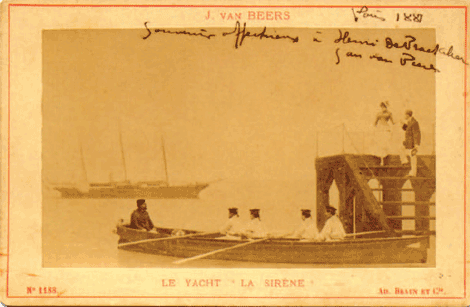
Jan Van Beers. The Yacht ‘la Sirène’. 1881.
Unknown material, dimensions and location (photograph by Adolphe Braun).
© amvc - Letterenhuis, Antwerp.
In 1887 and 1888 a far bigger row put Van Beers again in the spotlight, securing him of the undivided attention of public and press for weeks on end. Once again, the painter's own actions were at the basis of the scandal. Confronted in an art dealer's shop with a number of forged paintings falsely bearing his signature, Van Beers had the paintings seized and subsequently sued the dealer. In court, however, the latter produced an unexpected witness in the person of Émile Eisman-Semenowsky, a Polish painter and former assistant of Van Beers. He testified that a couple of years earlier the Belgian painter had run a real ‘fabrique de tableaux’ which had produced an enormous number of paintings which the master himself had never even so much as touched. Whenever the quality of one of these ‘authorised forgeries’ was not up to standard, Eisman-Semenowsky stated, Van Beers had had it signed by one of his house servants - to enable him later, if necessary, to disassociate himself from them. As a result of this evidence the court dismissed Van Beers' claims and so it seemed that the painter's legal action had backfired in his own face. Yet once again, in a way, it was the artist who emerged as the ultimate victor: for as the Paris journal the Revue Illustrée observed in one of its articles on the scandal, the extensive press coverage of the affair made Van Beers almost a household name.
| |
A siren and three donkeys
All these rows and incidents undoubtedly played an important part in Van Beers' rapid rise to fame, but the real basis for his reputation had been laid earlier, by what was probably the biggest scandal in his career. An 1891 portrait of Van Beers in the popular series of caricatures published by the English periodical Vanity Fair not only demonstrates the celebrity status the painter had by then achieved - he was one of the three Belgians included in the series - but also shows that it was one particular painting that had brought him this renown. For the caricature quotes from a work by Van Beers himself: The Yacht ‘la Sirène’, a painting that is now lost but of which a previously unknown photograph has recently surfaced.
| |
| |
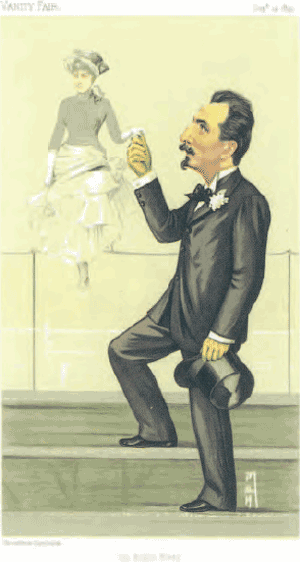
Leslie Ward, The Modern Wiertz. 1891. Lithography. 32 × 19 cm. Private collection. Antwerp.
When exhibited in Paris and Brussels in 1881, La Sirène caused a scandal that rocked the Belgian art world and resonated throughout Europe. The painting shows an elegant woman being escorted by a naval officer to a rowing boat, where another officer and four sailors are waiting to ferry her to a larger boat. The title of the painting suggests that the yacht in the background is called La Sirène, but it is clear that the real siren is the woman being brought aboard. What shocked the public, however, was not this joking misogynist undertone, but the picture's extreme realism and its incredible sense of detail. Critics agreed that Van Beers had pushed his realism beyond what was humanly possible, and before long the artist was accused not just of having used photography as an aid to create it, but of having actually painted the picture over a photograph. Critics ironically wondered how many other prints existed of the painting and by which photographer the picture underneath had been taken. An enormous row followed. Periodicals and newspapers in Belgium and abroad attacked or defended Van Beers, discussed the techniques he might have used and published numerous open letters on the case. When an unidentified iconoclast subsequently vandalised La Sirène, the affair escalated. Van Beers set up a committee of inquiry and instructed it to examine his painting for any indication of a photograph under it. His committee - naturally - cleared him of all charges, which made the painter confident enough to take the matter to court and to sue his most tenacious detractor, the art critic Lucien Solvay. Once again, however, the artist lost the case: his adversary surprised friend and foe alike when he submitted to the court a painting by Van Beers depicting three donkeys together
| |
| |
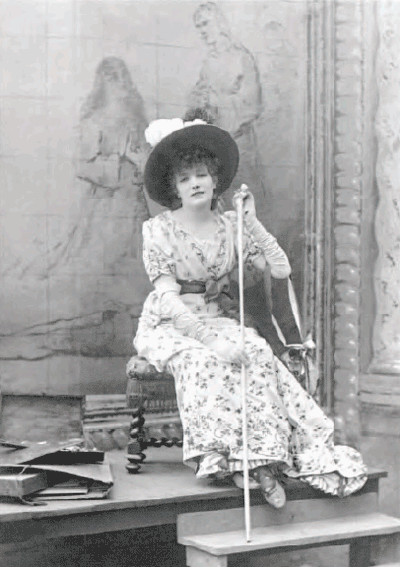
Jan Van Beers. Portrait of Sarah Bernhardt. 1888. Canvas. 38 × 28 cm. Koninklijke Musea voor Schone Kunsten, Brussels.
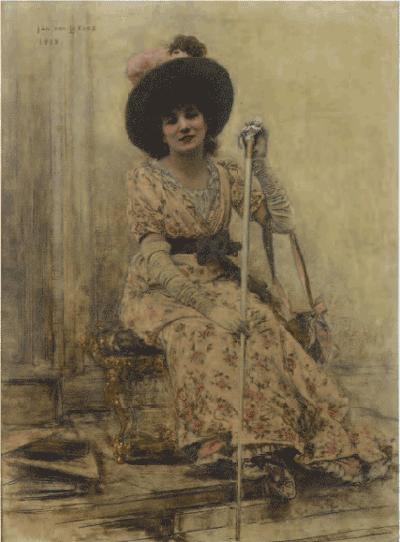
Nadar, Sarah Bernhardt as Tosca in ‘La Tosca’ by Victorien Sardou, 1887. Archives Photographiques Paris (Médiathèque du Patrimoine).
© Ministère de la Culture - France - Médiathèque de l'architecture et du patrimoine.
with a photograph of the same three donkeys in exactly the same positions, and the painter's claim was thrown out.
There were rumours that Van Beers had staged this scandal as well, once again in order to get as much publicity as possible. If that really was the case, it was certainly an extremely successful scheme: for it built the artist's reputation as not only a hyper-realist but also a ‘scandaliste’ and lay at the heart of the vogue for his work in the 1880s and 1890s. That there is no such thing as bad publicity is a credo that certainly seemed to work for Van Beers. The reputation thus established gave the artist access to Europe's rich and famous, for whom he from then on painted endless series of pictures of beautiful cocottes and portraits, all in his meticulously realist style. That this style was not quite as innocent as he himself had always maintained, is suggested by some recent evidence regarding his portrait of the world-famous actress Sarah Bernhardt. Although Bernhardt moved in the same circles as Van Beers, it seems that either the artist did not succeed in getting her to pose for him or that he did indeed need photographic documentation for his quasi-photographic technique: his portrait of the actress is literally copied from a photograph by the Parisian photographer Nadar.
Van Beers' photographic paintings made him an immensely wealthy man, so that although the quality of his work declined in the 1890s, by the turn of the century he could call himself the owner not only of the extravagant ‘fairy palace’ in Paris, but also of a country estate in Fay-aux-Loges, near Orléans. However, his money lasted longer than his reputation as an artist. Baroness Emma Orczy,
| |
| |
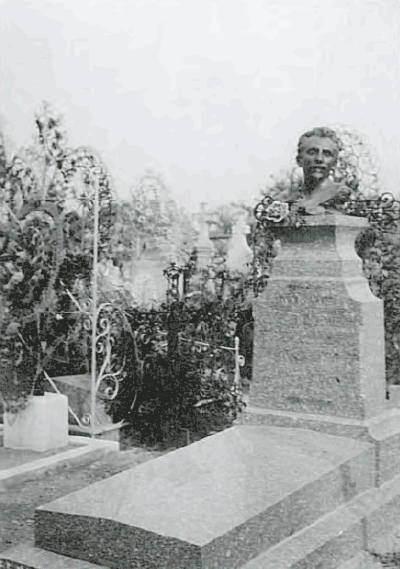
Tomb of Jan Van Beers at the cemetery of Fay-aux-Loges. France. Koninklijk Museum voor Schone Kunsten, Antwerp.
the writer of the Scarlet Pimpernel novels, recalls in her 1947 autobiography Links in the Chain of Life that she sometimes used to meet Van Beers, then in his later years, in Monte Carlo. On one of these occasions, she writes, the painter entrusted her with some of his pictures, which he asked her to sell in London. When she returned to England, however, and consulted one or two art dealers about them, she met everywhere ‘ the same criticism, that terrible bugbear of nineteenth-century artists: “ Old-fashioned”’. The vogue for Van Beers' scandalising work was clearly over, and the memory of the artist was subsequently lost in the mists of time - though some may agree that Van Beers' spectacular life was worth paying such a price.
| |
Further reading
Jan Dirk Baetens. ‘Photography in the Picture: Style, Genre and Commerce in the Art of Jan Van Beers (1852-1927)’. In: Image [&] Narrative, 14 and 15. (2006): s.p. [http://www.imageandnarrative.be].
|
|